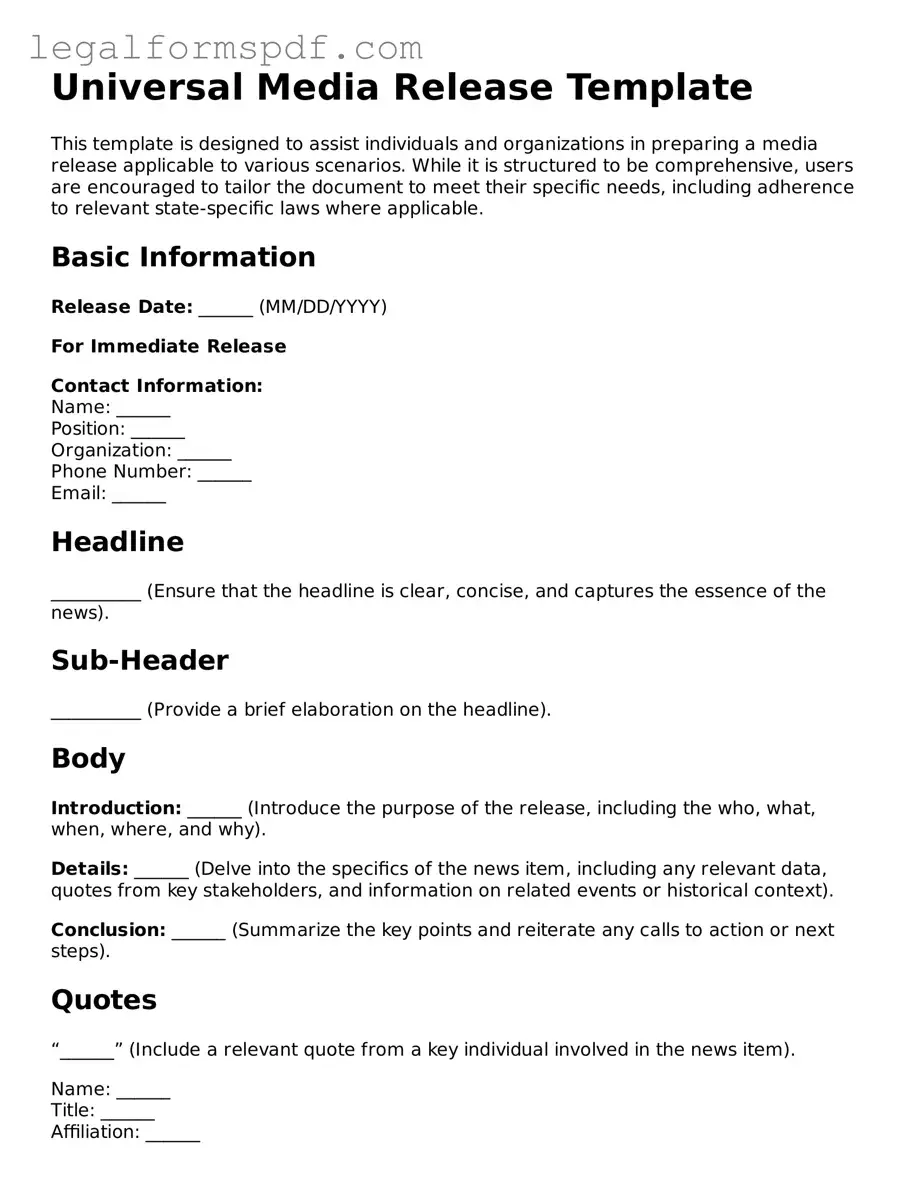Universal Media Release Template
This template is designed to assist individuals and organizations in preparing a media release applicable to various scenarios. While it is structured to be comprehensive, users are encouraged to tailor the document to meet their specific needs, including adherence to relevant state-specific laws where applicable.
Basic Information
Release Date: ______ (MM/DD/YYYY)
For Immediate Release
Contact Information:
Name: ______
Position: ______
Organization: ______
Phone Number: ______
Email: ______
Headline
__________ (Ensure that the headline is clear, concise, and captures the essence of the news).
Sub-Header
__________ (Provide a brief elaboration on the headline).
Body
Introduction: ______ (Introduce the purpose of the release, including the who, what, when, where, and why).
Details: ______ (Delve into the specifics of the news item, including any relevant data, quotes from key stakeholders, and information on related events or historical context).
Conclusion: ______ (Summarize the key points and reiterate any calls to action or next steps).
Quotes
“______” (Include a relevant quote from a key individual involved in the news item).
Name: ______
Title: ______
Affiliation: ______
Boilerplate
______ (Provide a brief description of the organization or individual issuing the release, including mission, history, and contact information for further inquiries).
End Section
###
This marks the end of the media release. Please direct all inquiries to the contact information provided at the beginning of this document.
